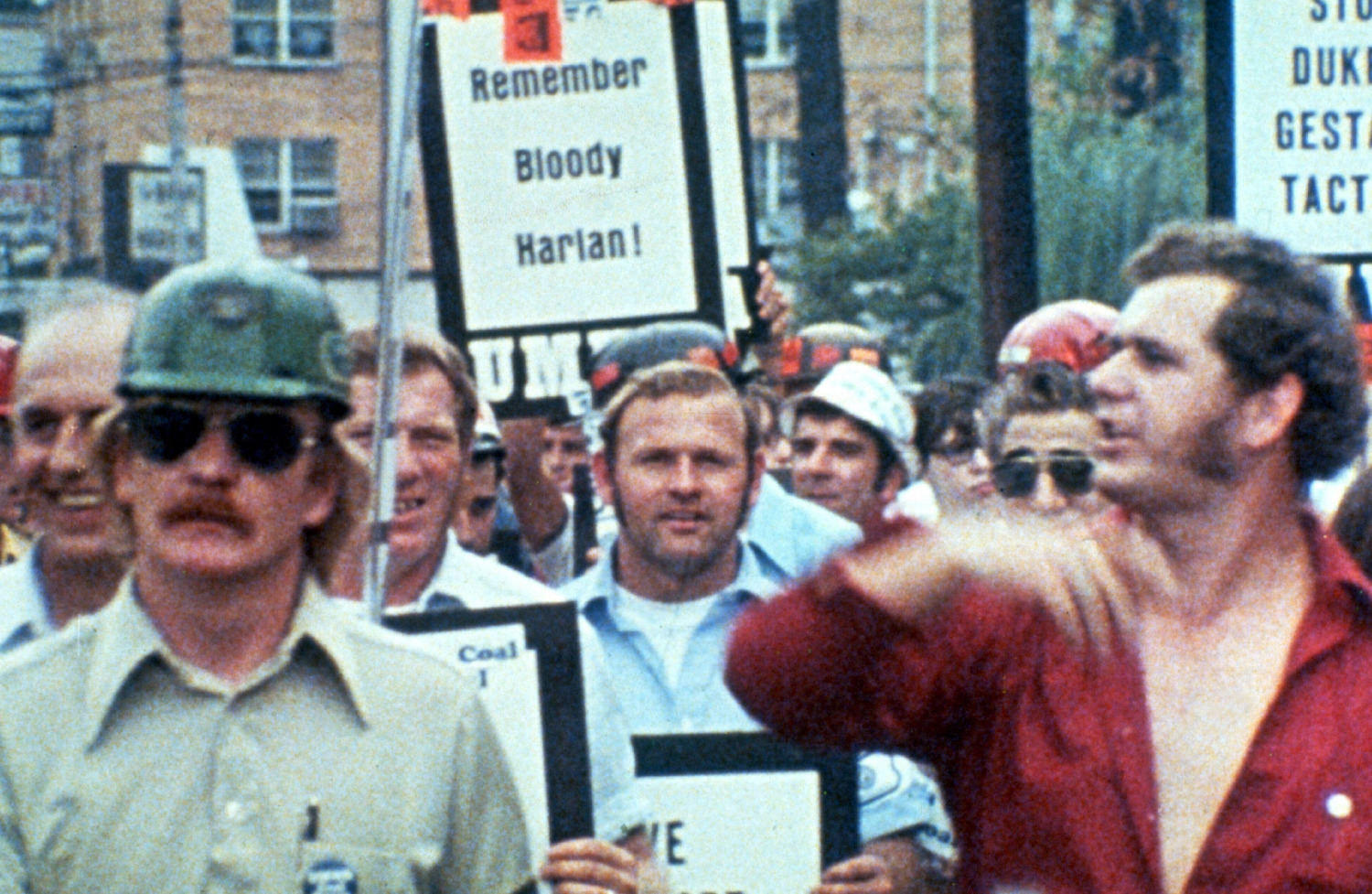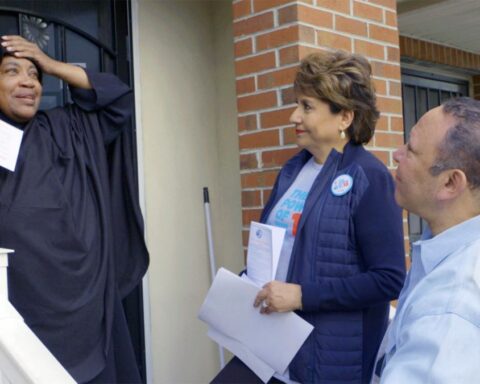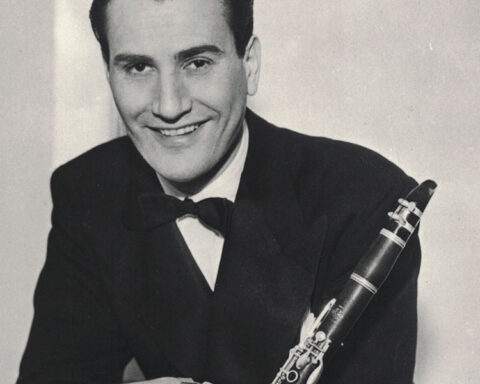Barbara Kopple’s first feature film, Harlan County, USA, a chronicle of a 13-month long Brookside mine strike in the Appalachian region of East Kentucky in the early 1970s, is a great documentary—though, arguably, it’s not a “good” one.
The greatness lies in its enduring emotional power. The film’s very title, Harlan County, USA is emblematic of class struggle. Honoured with an Academy Award, and listed in the National Film Registry, the film set the standard for other fictional films about class struggles (Matawan, Norma Rae) and the populist documentary films of Michael Moore. Yet it is also true that Harlan County, USA does not have the clarity and rigour of what we would usually think of as a well-made documentary.
For the claim to greatness, let’s start with a few of its indelible images: the buoyant opening shot of miners, looking like boys as they jump on a conveyer belt carrying them into the underground; the harrowed face of an old miner, animated with indignation, as he describes how the life of a mule was worth more than a man’s to the owners; the vitality of union activist Lois Scott grinning as she pulls a pistol from her bra, promising to fight fire with fire; the dreadful flashes of gunfire in the pre-dawn light; a wad of a murdered man’s brain tissue on the ground; an aged mother collapsing beside the open coffin of her son.
And there’s the film’s unusually potent soundscape, which Kopple herself recorded: the high rasp of a miner warning of an imminent explosion; the union bullhorn cutting the morning air calling for picketers; the hubbub of a street parade; the wall-to-wall traditional music, including political calls to arms, songs of joy and plaintive grief and calls to solidarity, that chain the present to the past.
The film struck a popular chord, crossing over into commercial theatres—a real-life morality play of heroes and villains, suspense, violence and triumph. Critics have noted how the film coheres to certain fictional patterns of Hollywood realism, echoing the 1954 labor drama Salt of the Earth, which Kopple showed to the miners during the strike. The 103-minute film reaches its first dramatic climax at around the hour mark, when the Women’s Club stands in the roadway to the mine, singing and facing down the sheriff and the scab labor in a convoy behind him. From the heights, we immediately crash to the lowest point when 23-year-old Lawrence Jones is murdered by the company “gun thugs,” leaving a 16-year-old wife and infant child. In the muted aftermath, the company concedes to sign a contract, but even that victory is temporary. We are left with the sense that the struggle will continue, as it has for generations.
What’s not “good” about it, then? For one thing, the chronology is messy. Kopple unfolds the story with ellipses, flashbacks and digressions. Without external sources, viewers are unlikely to see the causal links between the 1968 Farmington Mine disaster, the murder of Joseph Yablonsky and the 1972 election of reformist Arthur Miller, whose efforts to bring the Brookside miners into the national miners’ union precipitated the strike. Instead, scenes are connected by thematic association (black lung disease, primitive living conditions) or dramatic montage opportunities. In the boldest example, we see a defiant Tony Boyle, president of United Mine Workers, sneering at his rivals in the late sixties before his indictment for bribery and murder; later, we see him, a shriveled figure in a wheelchair, being carried into the court for his trial in 1974, an event that took place after the Brookside strike was over.
Then there’s the problem of Kopple’s approach to the material, a hybrid of advocacy and observation that makes the film seem as though it’s making up its rules for reality as it goes along. Kopple trained in the cinema verité tradition as an intern for Albert and David Maysles on films such as Salesman and Gimme Shelter and later on the Vietnam activist films Winter Soldier and Hearts and Minds. In Harlan County, USA, she usually adheres to the fly-on-the-wall approach, but is inconsistent. Sometimes, we hear her voice off-camera, asking questions, including a scene where she confronts the chief company enforcer, Basil Collins. As we learn from the “making of” feature on the 2006 Criterion 30th anniversary DVD, occasionally, as in a scene where a miner and a New York cop compare jobs, the film’s subject wore a hidden wireless microphone.
In the film’s most self-reflective moment—a pre-dawn scene—the camera is knocked over by the company thugs, though we know nothing of the follow-up. (Kopple says she and her crew were beaten until the strikers rescued them.) Also, in retrospect, we know that the film crew, embedded with the miners, were a shield against worse violence, though that role is never reflected upon in the film.
There are many dangling questions, large and small. Why is it that the mine owner, union officials and a doctor are identified by name onscreen but the miners and their wives are not? Does Kopple go overboard in portraying the Appalachian proletariat as so socially progressive? In a region of Ku Klux Klan activity, we see an African-American miner, waiting with two white men for treatment for black lung disease, or pneumonoconiosis, joking about brotherhood in oppression: “We done make every colour when we went in. You all look the same when you came out.”
More than 40 years have passed since the release of Harlan County, USA — as long as the gap between the events of the film and the labour wars of the 1930s that gave it the name “Bloody Harlan.” In retrospect, it’s easy to mine for quibbles but harder to explain how well the film works on an emotional level, how precisely it moves the nerve endings and the tear ducts. That’s not because it’s comprehensive or rigorous but thanks to the intensity of feeling communicated through both song and language.
Language may be the most overlooked strength of Harlan County, USA: the flavour of the Appalachian speech of the miners and their wives. Distinctive and archaic, sometimes hard to decipher, it forms a through-line of vernacular poetry in the film in words worthy of a Cormac McCarthy or Elmore Leonard.
Here’s just one example, from around the 80-minute mark of the film, when two young men show the filmmakers the place where their friend was shot minutes ago.
-What happened?
-Got shot in the damn head. Shot in the face with a shotgun.
-Who shot him?
-A goddamn scab. Bill Bruner. That’s brain that’s laying there. A goddamn fella when he tried to do somethin’. That’s what a scab does to a person by God, when they’re not lookin’. See, the pissants carrying off—a goddamn man’s brain. While he’s layin’ over in the hospital dying. Maybe shot all to hell.
Perhaps even Homer didn’t get the siege of Troy historically right, but he found the key to plant that war story in our collective imaginations. So did Barbara Kopple with Harlan County, USA.
Harlan County, USA is available on DVD from The Criterion Collection and in the USA on Film Struck.












